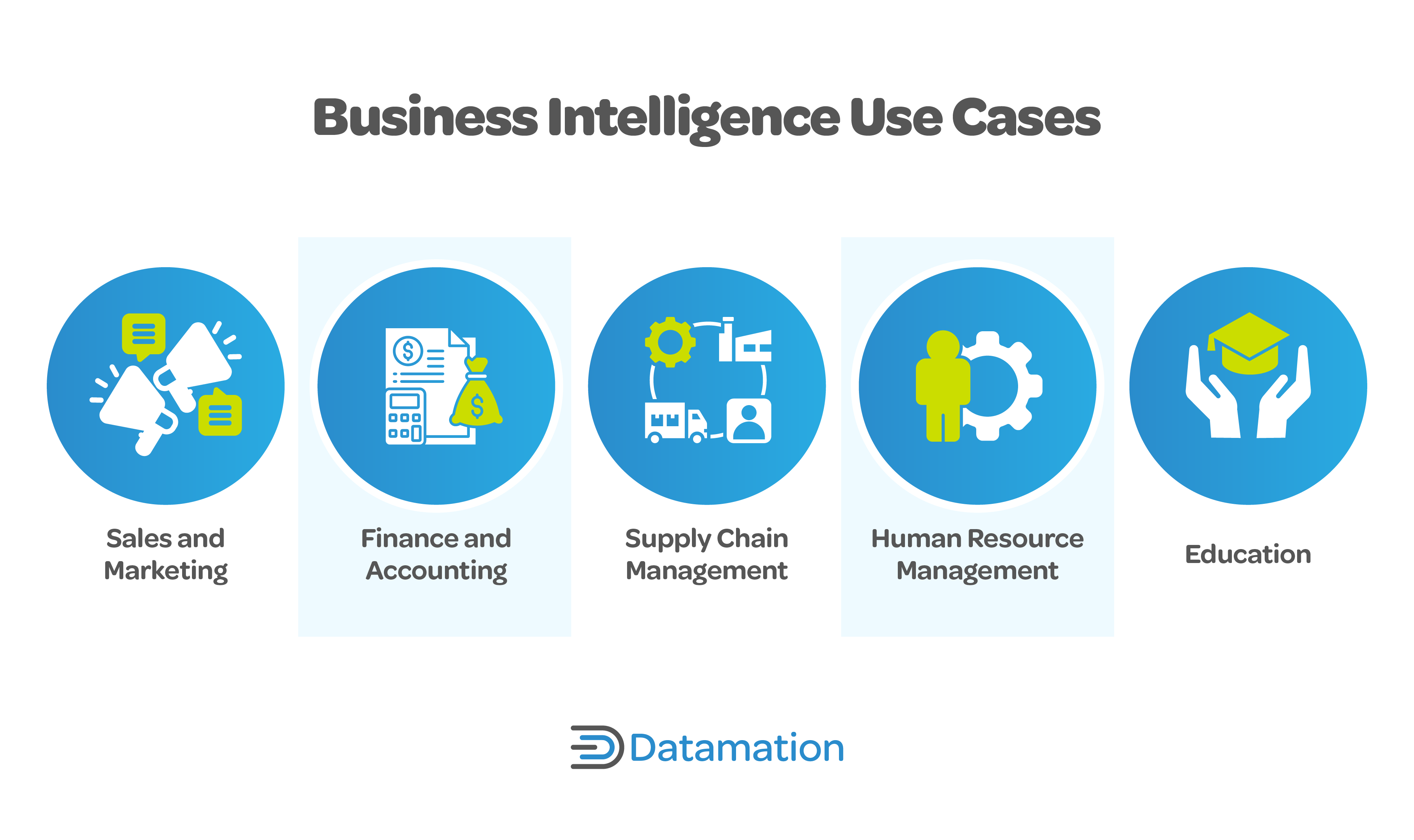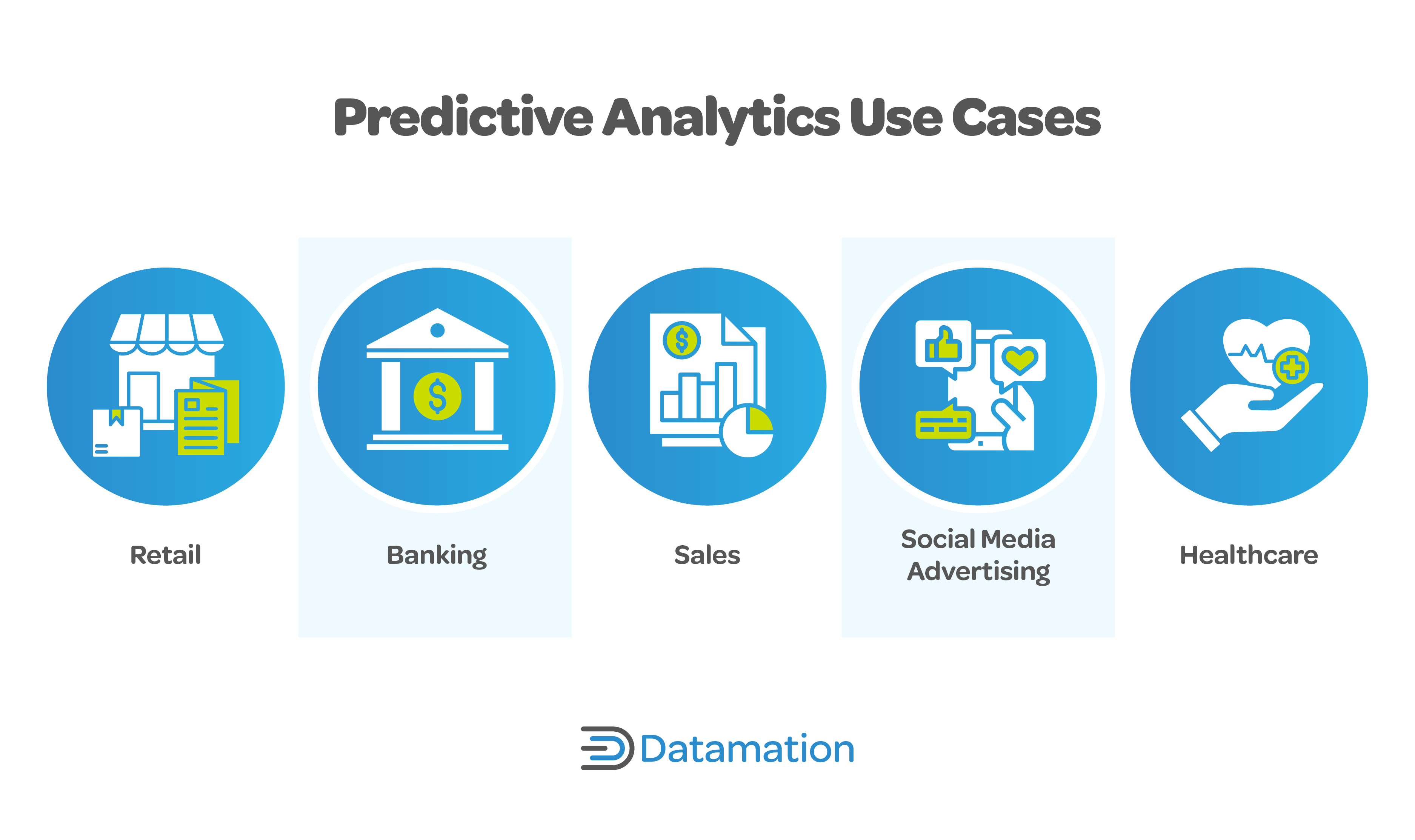Business intelligence (BI) refers to the processes, strategies, and tools used to convert raw enterprise data into information that is easier to interpret and use to understand business performance better. Using data mining, data visualization, data tools, business analytics, and descriptive analytics, BI provides valuable insights that can help you make data-driven decisions that can boost revenue and increase business efficiency.
Predictive analytics, on the other hand, is the use of historical and current data to predict future scenarios and outcomes. It involves examining past data trends and patterns to forecast the likelihood of those patterns repeating, giving you the opportunity to anticipate future events and prepare strategically.
By understanding the differences between business intelligence and predictive analytics, the pros and cons of each, and their uses, you can make better decisions about which tool to use for the specific needs of your business.
The table below gives an overview of the primary differences between BI and predictive analytics in terms of features, usage, and drawbacks.
| Features | When to Use | Main Drawbacks | |
|---|---|---|---|
| Business Intelligence | Involves gathering, storing, and interpreting of historical and current data | For understanding performance and assessing past strategies |
• Data integrity issues • Complicated BI tools • Expensive setup • Data overload • IT dependence |
| Predictive Analytics | Uses statistical modeling and machine learning to predict future outcomes based on historical data | For forecasting future outcomes based on past trends |
• Data quality dependency • Inherent bias • Security and privacy concerns • Model maintenance • Costly implementation |
Business intelligence is a broad term that covers the gathering, storing, and interpreting of data generated within your organization. It employs a variety of strategies, systems, and tools for data analytics to facilitate business decision-making processes.
BI focuses on analyzing both historical and present data to understand previous performance and assess past strategies with the goal of enhancing future performance. Simply put, BI mainly concentrates on retrospective analysis.
BI tools allow you to analyze data sets through reports, summaries, dashboards, graphs, charts, and maps. These tools offer immediate, easy-to-understand insights about your organization’s current status.
BI is a powerful tool that can help businesses make better decisions. If used correctly, it can provide real-time analytics and promote understanding of complex business processes. Here are some of the key advantages of BI:
While using BI can be highly advantageous, it also comes with certain drawbacks to consider. Here are some of the most common:
BI has a wide range of applications and use cases across different industries. Businesses in various sectors can use it for in-depth reporting to evaluate their enterprise data and find areas of improvement.

BI tools are used to analyze customer behavior, track sales performance, and fine-tune marketing campaigns. They process customer data to pinpoint target segments, personalize marketing messages, and boost customer acquisition and retention.
With BI solutions, organizations can monitor financial performance, track cash flows, and generate financial reports. Since they deliver real-time access to financial data, businesses can make informed decisions about budgeting and risk management.
For the supply chain management field, BI processes involve collecting and analyzing data related to inventory levels, production rates, and supplier performance. As a result, companies can optimize their supply chain operations, reduce costs, and increase their overall operational efficiency.
BI solutions aid HR in talent management, workforce planning, and employee performance analysis. HR professionals can access, analyze, and interpret HR data easily using BI tools. This data includes employee demographics, performance metrics, and recruitment statistics, which can reveal issues such as low productivity, staffing needs, or training gaps.
Schools and other educational institutions employ BI to tailor learning experiences and meet individual student requirements. BI analyzes student data to detect trends, patterns, and correlations. Additionally, this enables real-time tracking of student progress.
Predictive analytics is an advanced form of data analytics that leverages past and current data, along with statistical and machine learning (ML) methods, to forecast future events. Unlike BI, which primarily looks at past and current occurrences, predictive analytics has a strong focus on the future, delivering insights into what could likely happen next.
Predictive analytics entails examining data patterns and unveiling correlations to construct models that can predict future outcomes. It handles vast amounts of data from diverse sources, offering a holistic view of factors that could impact future results.
By making use of historical data and statistical models, predictive analytics can help your business detect trends, forecast outcomes, and plan ahead. Here are some specific examples of how predictive analytics can be used to boost your business performance:
While predictive analytics offers undeniable benefits that can greatly enhance decision-making and outcomes, it’s crucial to acknowledge and understand its potential disadvantages before implementation. This awareness enables you to proactively address and mitigate any challenges that may arise. Here are some of the potential disadvantages of predictive analytics:
Predictive analytics spans various sectors and has a multitude of practical applications. It empowers businesses to anticipate trends, make informed decisions, and adjust processes through predictive models and data-driven insights.

Businesses can use predictive analytics to pinpoint customers who are likely to churn. By analyzing historical data such as customer behavior, interactions, and demographics, companies can proactively take measures to retain at-risk customers.
In banking, predictive analytics revolutionizes risk management, fraud detection, and customer service. By analyzing vast datasets including transaction history, credit scores, and market trends, predictive models forecast credit risk, spot fraudulent activities in real-time, and personalize customer experiences.
Predictive analytics aid sales teams in foreseeing customer needs by analyzing purchase history, browsing behavior, social media interactions, and demographics. It supports customization of strategies and offerings, leading to timely engagement, upselling and cross-selling opportunities for revenue maximization, and long-term customer relationships.
Social media advertisers harness predictive analytics to forecast audience behavior, adjust targeting, and upgrade campaign performance. By analyzing historical data and trends, predictive models anticipate future user actions, allowing advertisers to strategically allocate resources, tailor content, and adjust strategies for maximum impact and ROI.
Predictive analytics leverages patient data to forecast disease risk, predict outcomes, and develop better treatment plans. It enables proactive interventions, efficient resource allocation, and personalized care, leading to improved outcomes and reduced costs. In addition, it facilitates population health management, helping healthcare organizations recognize at-risk populations and implement preventive measures.
Both business intelligence and predictive analytics tools can provide major benefits to your business, depending on your goals. There is a wide range of reliable tools for BI and predictive analytics to meet a wide range of enterprise needs and budgets. Here are our recommendations.
![]()
Microsoft’s Power BI is a leading platform that stands out because of its array of features such as real-time analytics and dashboards, data compression, and smooth integration with other popular Microsoft products. It aids businesses in monitoring their operations in real time—this feature is particularly useful if your organization requires up-to-the-minute information to make critical business decisions.
Power BI’s data compression capabilities enable it to handle large datasets, allowing you to analyze and visualize vast amounts of data with ease. Its seamless integration with other Microsoft products, including Excel and Azure, lets you import data directly into Power BI, increasing its versatility.
However, it’s important to note that Power BI can be resource-intensive, particularly when dealing with large datasets or complex data models. Its wide range of features and capabilities can mean a steep learning curve for new users. But the comprehensive features of Power BI outweigh the cons, making it an incredibly powerful tool for any organization’s data analysis needs.
Visit Microsoft Power BI![]()
Qlik Sense is a powerful BI tool known for its interactive data visualization capabilities that enable you to create personalized, interactive data visualizations, reports, and dashboards from multiple data sources. Qlik Sense also has an associative data indexing engine that supports exploring all possible associations in the data, not just pre-defined hierarchies. This gives you a more in-depth understanding of your data. The software also comes with self-service analytics that let you build your own dashboards and reports without needing extensive technical skills.
Qlik Sense does have drawbacks—setup can be complex, particularly for those without a technical background. Aside from that, the tool can be expensive, with separate costs for different capabilities. But with the right setup and investment, this BI software can add significant value to any organization looking to maximize their data for insights and decision-making.
Visit Qlik Sense![]()
SAP Analytics Cloud is a premier choice in the predictive analytics field due to its extensive range of features and capabilities. Its AI-driven natural language queries and AI-powered augmented analytics let you engage with the tool conversationally and get automated insights for quicker, more assured decision-making.
SAP Analytics Cloud can also be deployed as an on-premise, cloud-based, or hybrid platform, showcasing its flexibility and integrability. It has enterprise planning features and unifies financial, supply chain, and operational planning within a single solution. This level of integration and the capacity to deliver mission-critical analytics make it an ideal choice for businesses of all sizes.
Even though SAP Analytics Cloud has a steep learning curve and complex third-party integration, its advanced features and all-inclusive analytics solutions make it a strong contender in the industry.
Visit SAP Analytics Cloud![]()
The Alteryx AI Platform is a feature-rich predictive analytics tool designed to handle complex predictive modeling tasks, making it suitable for businesses of varying sizes and sectors. The platform has built-in automated feature selection and engineering features that simplify identifying important data features for predictive modeling. Its enterprise-grade AI lets you develop and deploy ML models with ease, even without extensive coding expertise.
Alteryx’s limited visualization options and occasional slow response times from customer support are shortcomings to consider. However, its advanced, user-friendly features and powerful AI capabilities make it a valuable asset for predictive analytics, outweighing the minor drawbacks.
Visit Alteryx AI PlatformWhile distinct in their functions, BI and predictive analytics work hand in hand to serve businesses. BI is instrumental in dissecting past events and trends, empowering organizations to make decisions rooted in historical data. In contrast, predictive analytics offers a glimpse into the future, equipping your business with the ability to foresee changes and strategize accordingly.
In short, it’s not a matter of deciding which is better between BI and predictive analytics—rather, it’s about how these two complementary tools can be integrated to serve businesses more effectively. When used together, they create an all-encompassing analytical framework that ranges from deciphering historical patterns to predicting and preparing for future trends. This combination unlocks a comprehensive understanding, empowering strategic decision-making and ensuring a competitive advantage.
Read our full list of best predictive analytics software for 2024 and find out what these tools can do to help you prepare your business for the future.

Datamation is the leading industry resource for B2B data professionals and technology buyers. Datamation's focus is on providing insight into the latest trends and innovation in AI, data security, big data, and more, along with in-depth product recommendations and comparisons. More than 1.7M users gain insight and guidance from Datamation every year.
Advertise with TechnologyAdvice on Datamation and our other data and technology-focused platforms.
Advertise with Us
Property of TechnologyAdvice.
© 2025 TechnologyAdvice. All Rights Reserved
Advertiser Disclosure: Some of the products that appear on this
site are from companies from which TechnologyAdvice receives
compensation. This compensation may impact how and where products
appear on this site including, for example, the order in which
they appear. TechnologyAdvice does not include all companies
or all types of products available in the marketplace.